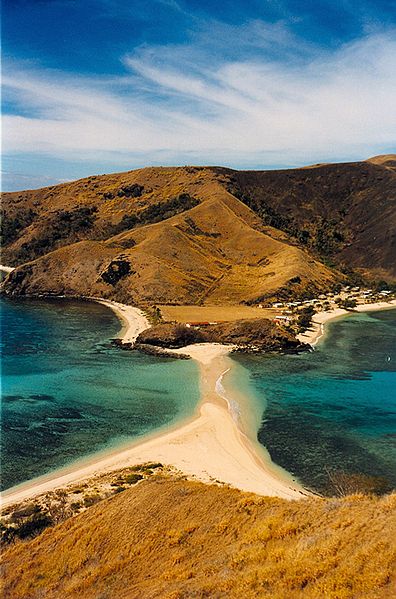A reef is a ridge or shoal of rock, coral, or similar relatively stable material lying beneath the surface of a natural body of water. Many reefs result from natural, abiotic (non-living) processes such as deposition of sand or wave erosion planing down rock outcrops. However, reefs such as the coral reefs of tropical waters are formed by biotic (living) processes, dominated by corals and coralline algae. Artificial reefs, such as shipwrecks and other man-made underwater structures, may occur intentionally or as the result of an accident. These are sometimes designed to increase the physical complexity of featureless sand bottoms to attract a more diverse range of organisms. Reefs are often quite near to the surface, but not all definitions require this.
Coral reef at Nusa Lembongan, Bali, Indonesia
Pamalican island with surrounding reef, Sulu Sea, Philippines
A reef surrounding an islet
Reefs off Vanatinai Island in the Louisiade Archipelago
In oceanography, geomorphology, and geoscience, a shoal is a natural submerged ridge, bank, or bar that consists of, or is covered by, sand or other unconsolidated material, and rises from the bed of a body of water close to the surface or above it, which poses a danger to navigation. Shoals are also known as sandbanks, sandbars, or gravelbars. Two or more shoals that are either separated by shared troughs or interconnected by past or present sedimentary and hydrographic processes are referred to as a shoal complex.
Sandbar between St Agnes and Gugh on the Isles of Scilly, off the coast of Cornwall, England, United Kingdom
A tidal sandbar connecting the islands of Waya and Wayasewa of the Yasawa Islands, Fiji
Sandbar between Nosy Iranja Be and Nosy Iranja Kely (Nosy Iranja, Madagascar)
Amanohashidate in Miyazu, Kyoto Prefecture, Japan








